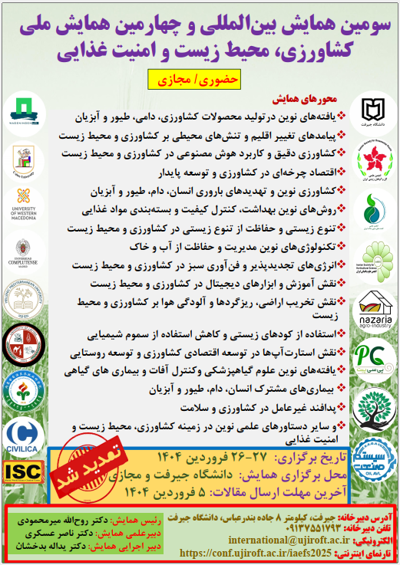0% Complete

نویسندگان :
کلمات کلیدی :
چکیده :
لیست مقالات بایگانی شده
اعظم امیری
فرناز سیستانی - فاطمه منگلی - سونیا عقیقی - اعظم ناظمی - زهره لری
طیبه چاره ساز - مجتبی ممرآبادی - فرهاد شکوهی فر - بیتا زعفرانلو
جلال قنبری - مرضیه بشارتیفر
بهمن خسرویپور - زینب نعامی
Seyedeh Zahra Mousavi Moghadam - Mohammad Mohsenzadeh - Roya Rezaeian-Doloei
Zeinab Khosravi Ghareche - Mohammadreza Rezaeigolestani

